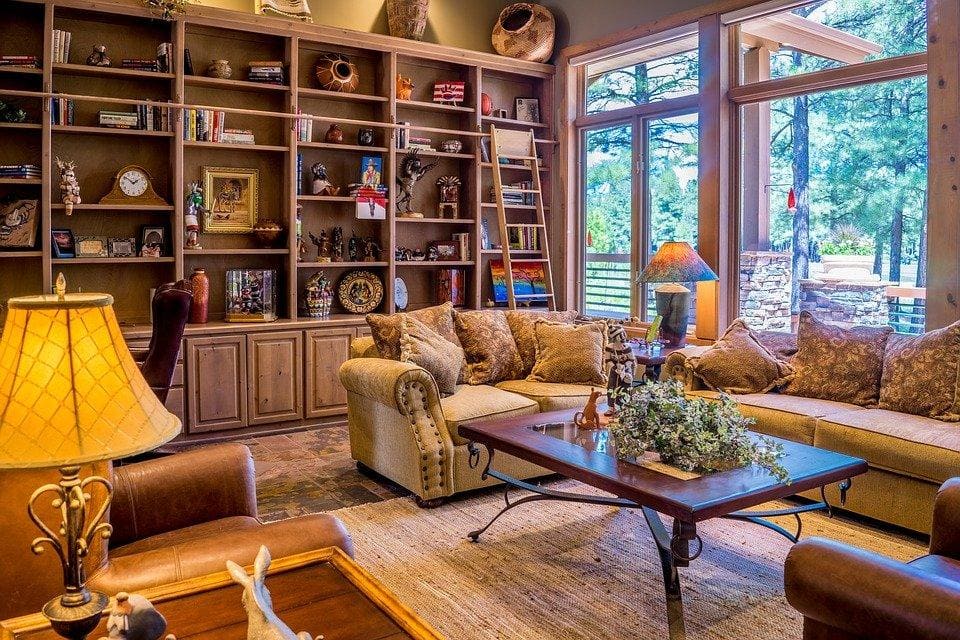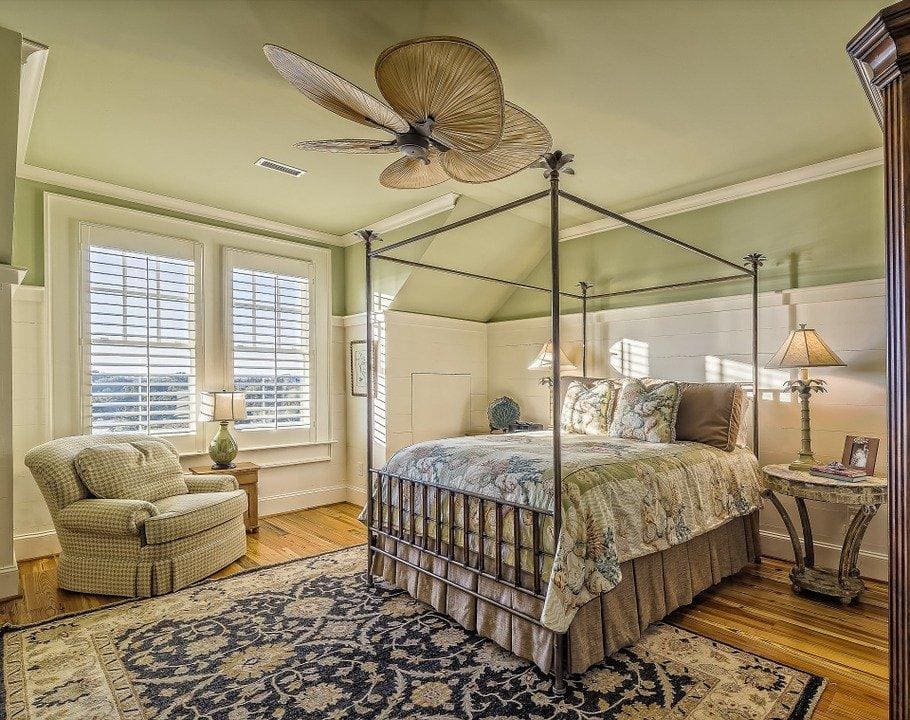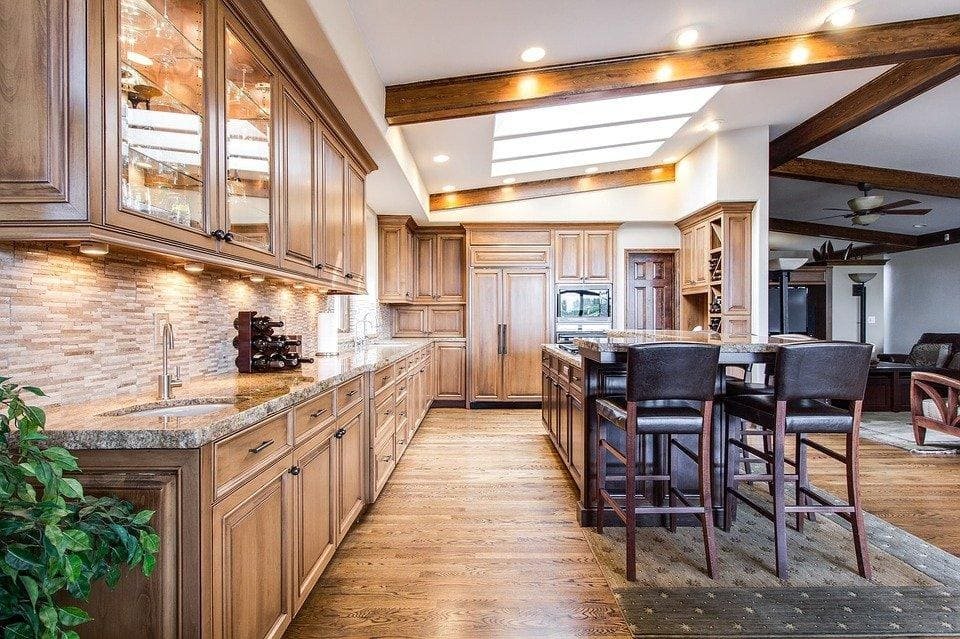If you’re looking to decorate your house in the mid-century modern style, you’re not alone. This enduring design trend from the middle of the 20th century experienced a comeback in recent years. Multiple big-name stores and brands at all price points carry mid-century modern lighting, furniture, and décor. Whether you know it or not, you’re probably somewhat familiar with many common mid-century modern furniture styles and design choices.
You might not know that mid-century modern is a nuanced style with a philosophy and a history to match. Genuinely understanding this decor style’s elements is the key to achieving mid-century modern style in your modern-day home.
What is Mid-Century Modern Style?
The term “mid-century modern” gets thrown around a lot to describe furniture and decor these days, but what does it mean, and where did it originate? While the exact dates are rough, mid-century modern is a design style that experienced its initial popularity from the 1930s to the 1960s.
It grew out of the German Bauhaus style and the German architects and designers who worked in that style. These individuals brought the trend with them in a post-World War II migration to the U.S.
Within the mid-century modern style, you can see the influence of the many different technological advancements of the time. Mid-Century Modern Designers combined newly created materials with old ones and blended organic, natural shapes with geometric ones.
Mid-century modern style is also a product of the growth of cities and suburbs during this time. Families of the era wanted modern, functional homes, and mid-century modern style met these needs.
It’s important to note that mid-century modern isn’t necessarily the same as the mid-century. Whereas mid-century could refer to any furniture or design from the mid-20th century, mid-century modern is a developed design style with a set of attributes.
The mid-century modern style focuses on simple, clean design, juxtapositions of different materials and colors, and overall functionality. This article will explore ten key elements that you can incorporate into your home.

1. Clean Lines, Contrasting Shapes
You’ll see it again and again—juxtaposition is a recurring theme in mid-century modern style. Both smooth, organic shapes and long, clean lines are combined in this style’s furniture and architecture. It’s easy to see in iconic chair styles like the butterfly chair and egg chair.
Mid-century arc lamps are another excellent example of a familiar piece that features a smooth organic shape. When selecting furniture and light fixtures, pick pieces that echo these clean lines and organic shapes. Tables and chairs with hairpin legs are great options, as are long, low mid-century modern couches.
2. Function Before Form
Lovers of efficiency, delight! Mid-century modern design focuses on the function of pieces and makes this just as high a priority or higher than the form. Essentially, mid-century modern furniture and decor are meant to serve a purpose, whether you’re picking a sturdy dining table or a cozy couch.
Incorporating this aspect into your home is simple. Pick items that are not only beautiful but also useful and meant to last. Trendy cheaply made items go strictly against this philosophy and should be avoided.
3. Natural and Artificial Light
The importance of light, both artificial and natural, can’t be left out of an article on mid-century modern design. In original mid-century modern architecture, designers made the bold choice of adding larger windows to homes to let in more natural sunshine. This extended further in the design of houses. Open floor plans, glass doors, and vaulted ceilings all aimed to maximize natural light in homes.
As far as artificial mid-century modern lighting, designs feature a range of some of the unique pieces you’ll find. Gracefully curving mid-century arc lamps, such as those found on NovaofCalifornia.com, bring in an organic element to your home. In contrast, classic bubble lamps, modelled after pieces from designer George Nelson, are a statement for any dining room.
4. Minimalism
If you haven’t already picked up on this, mid-century modern style is also very minimal and devoid of unnecessary ornamentation. Avoid superfluous decorations, fussy details, cluttered spaces, or too many trinkets in your own home. Instead, focus on furnishing and decorating your home with a few high-quality items or pieces that have personal significance to you.
5. Traditional Materials
Many mid-century modern movement designers, such as the Scandinavian Soft Modernists, loved using traditional materials such as wood and leather. This is echoed in many mid-century modern tables, bookcases, and bed frames you can find available today. The use of wood can also help you bring natural elements into your home, highlighting the mid-century modern design.
6. Non-Traditional Materials
One of the fun things about mid-century modern design is the variety. Besides bringing traditional materials into your home, you can experiment with non-traditional materials such as plastic, plywood, vinyl, and Lucite.
Do this, and you’ll be following in the footsteps of the great mid-century modern designers who were influenced by new materials of the time. In your own home, you can quickly achieve this look, mixing, say, a wooden dining table with plastic dining chairs or setting an acrylic coffee table in front of your leather couch. A mix of materials provides visual interest for your otherwise minimal decor.

7. Bold or Neutral Colors
The colour palette is one of the best places to customize your mid-century modern home because there are very few restrictions on what you can use. Mid-century modern colors cover a wide range, from earthy to bright, depending on the decade in question.
Choose colors you like or be inspired by vintage colors, bringing in pops of color in hues of deep orange, sage green, and turquoise against a neutral background.
8. Influence of Nature
As forward-thinking as mid-century modern style is, the influence of nature is also vital. You can see this in the design choices of mid-century modern houses, which were often designed to provide an even transition between indoor and outdoor spaces. You can echo this element in your own home by using plants as decorative items.
9. Attainable Design
If you’ve ever seen a picture of a room and thought, “My house could never look like that,” you’ll love that mid-century modern design is, at its heart, democratic. That means it’s meant to be attainable for anyone at any price point. You don’t have to have a degree in architecture or a deep understanding of German designers to use it in your home.
10. The Future as Seen Through the Lens of the Past
Mid-century modern design was originally meant to celebrate a spirit of advancement and echoes many of the time’s technological advances. You can see this influence in many of the key elements covered in this article, from the use of new materials to new design choices to a movement towards clean, open spaces.
Final Thoughts
There’s something to be said for a style of design that lasts for decades. Mid-century modern lighting and furniture choices still look current today and can work in just about any home.
Whether you want to add a touch of mid-century modern style to your home or fully invest in this look, you’ll likely find it easy to do because of the wide availability of furniture and decor. If you choose to decorate in mid-century modern style, you’re making a smart choice. A style that’s influenced close to a decade of home decor is sure to have staying power in the years to come.
Also read:








